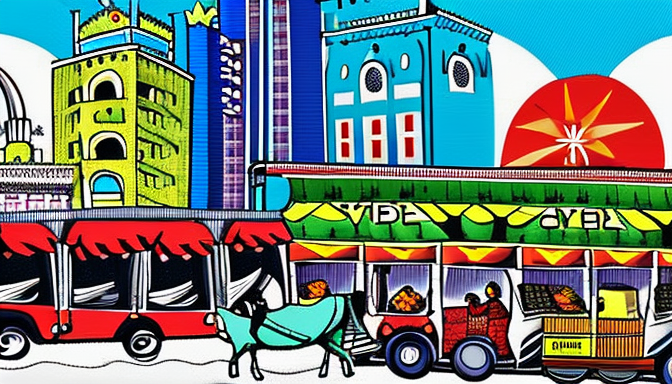Karachi, once a small fishing village, has become a bustling metropolis. This city has a story to tell, and it’s best told through captivating photographs and historical maps. Imagine flipping through a photo album that spans decades, capturing moments that shaped the heart of this vibrant city. Each image is a window into the past, revealing layers of culture, architecture, and life.
In the early days, Karachi was a modest port, with its charm lying in its simplicity. As we look at vintage photographs, we see the quaint streets and the hardworking fishermen who called this place home. Fast forward to today, and those same streets have transformed into busy highways filled with people from all walks of life. This evolution is not just about buildings; it’s about the spirit of the city.
Through these stunning visuals, we can witness:
- Historic landmarks that have stood the test of time
- Cultural shifts that reflect the diverse population
- The rapid urbanization that has defined the modern skyline
As you scroll through these images, you’ll feel the pulse of Karachi. It’s a city that never sleeps, always in motion, yet deeply rooted in its history. Each photograph is a reminder of how far Karachi has come, and it invites us to appreciate both its past and its present.
The Historical Landscape of Karachi
Karachi, once a small fishing village, has transformed into a bustling metropolis. This change is beautifully captured in a series of vintage photographs and historical maps. Each image tells a story—a glimpse into the past that connects us to the present. Can you imagine the streets filled with horse-drawn carriages? Or the vibrant markets that once thrived with local traders?
In the early days, Karachi was known for its serene beaches and quaint neighborhoods. As time passed, it evolved. The British colonial era brought significant changes. Stunning buildings, like the Frere Hall and the Mohatta Palace, emerged, showcasing architectural beauty. These landmarks are not just structures; they are symbols of Karachi’s rich history.
Consider this: each photograph is a window to a different time. From the bustling port in the 19th century to the crowded streets of the 1950s, the visuals highlight how the city adapted and thrived. With urban development, Karachi became a melting pot of cultures. The blend of traditions can be seen in the diverse communities that call it home.
To illustrate this journey, here’s a small table comparing Karachi’s past and present:
| Era | Key Features |
|---|---|
| 19th Century | Fishing village, colonial architecture |
| Mid 20th Century | Urbanization, cultural diversity |
| Present Day | Bustling metropolis, modern skyscrapers |
As we reflect on these historical snapshots, we see more than just buildings; we see the spirit of Karachi. Each photograph sparks curiosity. What stories do these streets hold? How did the people adapt to change? Karachi’s past is not just history; it’s a living narrative that continues to unfold.

Modern Karachi: A City in Motion
Karachi today is a bustling metropolis, a place where tradition meets modernity. The city is alive with energy, and its streets tell stories of change and growth. Have you ever walked through a neighborhood and felt the pulse of its history? Karachi is just like that. From the old colonial buildings to the sleek skyscrapers, each corner reveals a new layer of its vibrant identity.
Take a moment to imagine the transformation. In the past, Karachi was a modest fishing village. Now, it’s a sprawling urban hub. The skyline is constantly evolving, with architectural marvels popping up every year. These structures are not just buildings; they symbolize the city’s ambition and resilience. The contrast between the old and new is striking, creating a unique visual tapestry.
One of the most fascinating aspects of modern Karachi is its diversity. The city is a melting pot of cultures, languages, and traditions. This rich blend is reflected in its food, festivals, and daily life. For instance, you can savor a plate of biryani from a street vendor and then enjoy a gourmet meal at a high-end restaurant, all within a few blocks.
As you explore, you’ll notice that Karachi is not just a city; it’s a living, breathing entity. The streets are filled with vendors, families, and laughter. It’s a place where every photograph captures a moment in time, showcasing the ever-changing landscape of this remarkable city. So, what are you waiting for? Dive into the heart of Karachi and witness its transformation!
Frequently Asked Questions
- What historical events significantly shaped Karachi?
Karachi’s history is rich with events like its establishment as a trading port in the 18th century, the partition of India in 1947, and its rapid urbanization in the late 20th century. Each of these milestones has left an indelible mark on the city’s identity.
- How has the architecture of Karachi evolved over the years?
The architectural landscape of Karachi has transformed dramatically, blending colonial, modern, and contemporary styles. From historic buildings like the Frere Hall to the sleek skyscrapers of today, the city showcases a fascinating juxtaposition of old and new.
- What are some must-see landmarks in Karachi?
When exploring Karachi, don’t miss iconic sites such as the Quaid-e-Azam’s Mausoleum, Clifton Beach, and the vibrant Saddar area. Each landmark tells a unique story of the city’s past and present.
- How does urbanization affect daily life in Karachi?
Urbanization in Karachi has led to a bustling metropolis filled with opportunities, but it also brings challenges like traffic congestion and pollution. The city’s dynamic nature means that life here is always in motion, much like the waves of the Arabian Sea.